Postal Digital Transformation Dynamics—A System Dynamics Approach
Abstract
:1. Introduction
- Develop a system dynamics conceptual model of intermingling digital dynamics (variables);
- Analyze and design policy interventions to ensure the financial sustainability of the postal sector in Southern Africa.
- How do these variables interact with each other in a dynamic setting?
- What policy designs can be derived from the resulting model to aid policymakers and DPOs in Southern Africa to better manage the digital transformation, to deliver value to society and contribute to the financial sustainability of the postal sector?
2. Literature Review
3. Research Methodology
3.1. System Dynamics as Research Strategy
System Dynamics Principles
- The concept of feedback systems;
- A familiarity with decision-making processes;
- The investigational model approach to complex systems;
- The digital computer simulates a plausible mathematical model.
3.2. System Dynamics Approach in Technology Adoption
3.3. Dynamic Hypothesis
3.4. Stocks and Flows of the Model
4. Findings and Discussion
4.1. Model Verification and Validation
4.1.1. Structure Confirmation Tests
4.1.2. Structure Confirmation Tests
4.1.3. Dimension Consistency Test
4.1.4. Structure-Oriented Behavior Test
Boundary Adequacy Test
Extreme Conditions Test
Extreme Condition Test of Zero Value (0%)
4.1.5. Behavior Pattern Test
4.2. Policy Analysis and Policy Design
4.2.1. Baseline—Business as Usual (Scenario 1)
4.2.2. Adoption Improvement (Scenario 2)
4.2.3. Adoption Decline (Worst-Case Scenario 3)
4.2.4. Adoption (Best-Case vs. Worst-Case Scenario 4)
4.2.5. Digital Culture Improvement (Scenario 5)
4.2.6. Operations Capability Maturity Improvement (Scenario 6)
4.2.7. Financial Performance Improvement (Best-Case Scenario 7)
5. Conclusions and Recommendations
5.1. Conclusions
5.2. Recommendations
5.2.1. Implications for Practice
- Improving marketing effectiveness to at least 20%, improving adoption fraction to at least 15%, and improving contact rate to at least 25 key customers per annum.
- Managing and preventing “dis-adoption” by key customers and improving the postal readiness index to at least 90% by (a) increasing the number of digital financial payment services offered, (d) increasing the e-post and e-government services offered, (c) increasing the number of total support services offered, (d) increasing the number of e-commerce services offered, (e) expanding physical service features in line with integrated product plan.
- Ensure that an enterprise architecture (EA) blueprint is developed and implemented through an employee engagement process to ensure the “alignment and buy-in” of all staff; the EA blueprint is the factor that ensures that everyone in the organization holds the same “mental picture”, which fosters a shared vision.
- Enroll staff in train post courses to prepare a digitally competent workforce and ensure that at least 10% are trained by 2025, with the remainder scheduled to complete training before 2028.
- Improve compliance with quality of service to above 85% and compliance with electronic advance data (EAD) to above 95% through improved scanning and business processes optimization.
- Ensure cost optimization of staff expenses and operating expenses to ensure that the total expenses do not exceed the best practice of 40% of the total revenue; this is a critical success factor to ensure the sustainability of the DPO. This requires the streamlining of resources including human capital.
5.2.2. Implications for Policy
- Ensure that designated postal operators receive the due Universal Service Obligations (USO); the DPOs should receive a percentage of their total expenses as USO. This is calculated from the percentage of the rural population; in the pilot study in the context of South Africa, the rural population stands at 33%. The rationale is that the total expenses are inclusive of shared services (e.g., ICT, human resources, properties, and finance) and operations (retail, delivery, and depot staff expenditure, transportation expenses, and sundry expenses); rural operations are not profitable compared to urban and metropolitan operations and, due to USO requirements, postal services are a universal right and even rural citizens are entitled to the services regardless of viability.
- The stability of the executive is of prime importance and, in particular, the role of the Chief Operating Officer (CEO) or Postmaster General (PMG). The Board of Directors and particularly the shareholders should protect the office of the CEO/PMG and ensure that the CEO/PMG completes their term. This study’s findings point out that instability in the role of CEO/PMG results in instability of the entire organization. The CEO/PMG must be provided with the necessary support from the shareholders and the CEO/PMG must be allowed to execute their responsibilities without political hindrance. Instability at the upper echelons of the organization results in a morale decline and a toxic culture emerging, which undermines the shared vision and cohesion.
Author Contributions
Funding
Data Availability Statement
Conflicts of Interest
References
- UPU. Annual Strategic Review 2017. Bern. 2017. Available online: https://www.upu.int/UPU/media/upu/files/UPU/aboutUpu/strategy/annualStrategicReview2017En.pdf (accessed on 2 June 2023).
- UPU. Postal Development Report. Berne. 2018. Available online: https:www.upu.int/en/Publications/2IPD/Postal-Development-Report-2017 (accessed on 2 June 2023).
- UPU. Postal Development Report 2018. Available online: https://www.upu.int/en/Publications/2IPD/Postal-Development-Report-2018 (accessed on 2 June 2023).
- UPU. Postal Development Report. Berne. 2019. Available online: https://www.upu.int/en/Publications/2IPD/Postal-Development-Report-2019 (accessed on 2 June 2023).
- UPU. Postal Development Report 2020. Berne. 2020. Available online: https://www.upu.int/en/Publications/2IPD/Postal-Development-Report-2020 (accessed on 2 June 2023).
- Mutingi, M.; Matope, S. Dynamics of information technology adoption in a complex environment. In Proceedings of the 2013 IEEE International Conference on Industrial Technology (ICIT), Cape Town, South Africa, 25–28 February 2013; pp. 1466–1471. [Google Scholar] [CrossRef]
- USPS. Riding the Waves of Postal Digital Innovation. Washington DC. 2016. Available online: https://www.uspsoig.gov/sites/default/files/document-library-files/2016/RARC-WP-16-014.pdf (accessed on 5 July 2023).
- (ITU) International Telecommunication Union. Report on the Implementation of the Strategic Plan and Activities of the Union for 2018–2019 (ITU Annual Progress Report). 2019. Available online: https://www.itu.int/en/council/planning/Documents/Annual-report-2018.pdf (accessed on 5 July 2023).
- Melnikovas, A. Towards an Explicit Research Methodologyy: Adapting Research Onion Model for Future Studies. J. Futur. Stud. 2018, 23, 29–44. [Google Scholar] [CrossRef]
- Mokgohloa, K.; Kanakana-Katumba, G.; Maladzhi, R.; Xaba, S. A Grounded Theory Approach to Digital Transformation in the Postal Sector in Southern Africa. Adv. Sci. Technol. Eng. Syst. J. 2021, 6, 313–323. [Google Scholar] [CrossRef]
- Sterman, J.D. System dynamics modeling: Tools for learning in a complex world. IEEE Eng. Manag. Rev. 2002, 30, 42–52. [Google Scholar] [CrossRef]
- Richardson, G.P. System Dynamics Review. Syst. Dyn. Rev. 2011, 27, 219–243. [Google Scholar] [CrossRef]
- Maldonado, M.U.; Grobbelaar, S.; Uriona, M.M.; Grobbelaar, S.S. System Dynamics Modelling in the Innovation Systems Literature. No. June, p. 32. 2017. Available online: https://www.researchgate.net/publication/319545608 (accessed on 10 February 2023).
- Sterman, J.D. Business Dynamics: Systems Thinking and Modeling For a Complex World; McGraw-Hill: London, UK, 2000. [Google Scholar] [CrossRef]
- Mokgohloa, K.; Kanakana-Katumba, G.; Maladzhi, R. Development of a technology and digital transformation adoption framework of the postal industry in Southern Africa: From critical literature review to a theoretical framework. Adv. Sci. Technol. Eng. Syst. 2020, 5, 1190–1206. [Google Scholar] [CrossRef]
- Chao, C.M. Factors determining the behavioral intention to use mobile learning: An application and extension of the UTAUT model. Front. Psychol. 2019, 10, 1652. [Google Scholar] [CrossRef] [PubMed]
- Barlas, Y. Formal aspects of model validity and validation in system dynamics. Syst. Dyn. Rev. 1996, 12, 183–210. [Google Scholar] [CrossRef]
- Pruyt, E. Small System Dynamics Models for Big Issues; TU Delft Library: Delft, The Netherlands, 2013. [Google Scholar]
- Morecroft, J.D.W. Strategic Modelling and Business Dynamics: A Feedback Systems Approach; John Wiley & Sons: Hoboken, NJ, USA, 2015. [Google Scholar]
- Ceresia, F. The Dynamics of the Organizational Culture in a Municipality. In Proceedings of the 31st International Conference of the System Dynamics Society, Cambridge, MA, USA, 21–25 July 2013; ISBN 9781632661630. [Google Scholar]
- Trivellas, P.; Reklitis, P.; Konstantopoulos, N. A dynamic simulation model of organizational culture and business strategy effects on performance. AIP Conf. Proc. 2007, 963, 1074–1077. [Google Scholar] [CrossRef]
- Warren, K. Strategic Management Dynamics; John Wiley and Sons: West Sussex, UK, 2008. [Google Scholar]
- Meadows, D.H. Thinking in Systems; Earthscan Publishers: London, UK, 2009. [Google Scholar]
- Haraldsson, H.V. Introduction to System Thinking and Causal Loop Diagrams; Department of Chemical Engineering, Lund University: Lund, Sweden, 2004. [Google Scholar]
- Ennen, E.; Richter, A. The whole is more than the sum of its parts or is it? A review of the empirical literature on complementarities in organizations. J. Manag. 2010, 36, 207–233. [Google Scholar] [CrossRef]


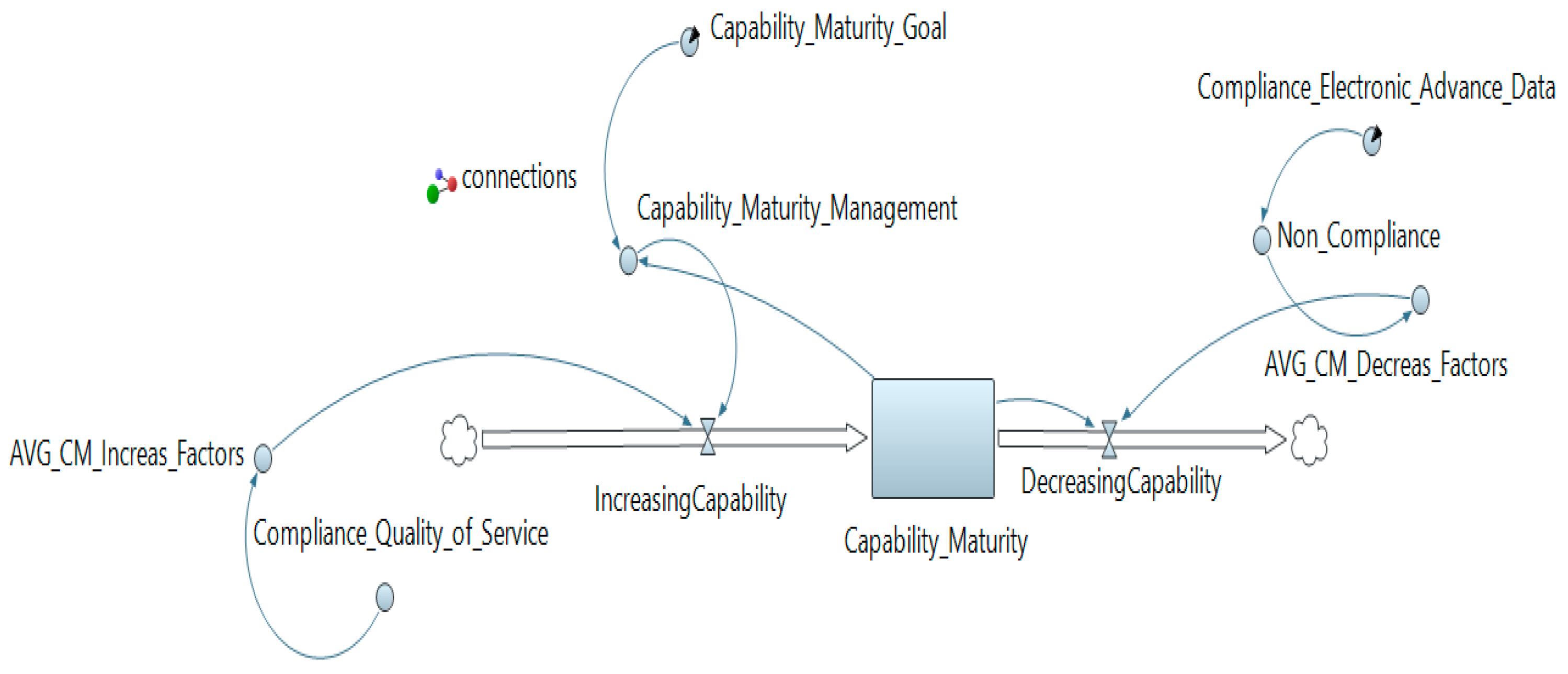
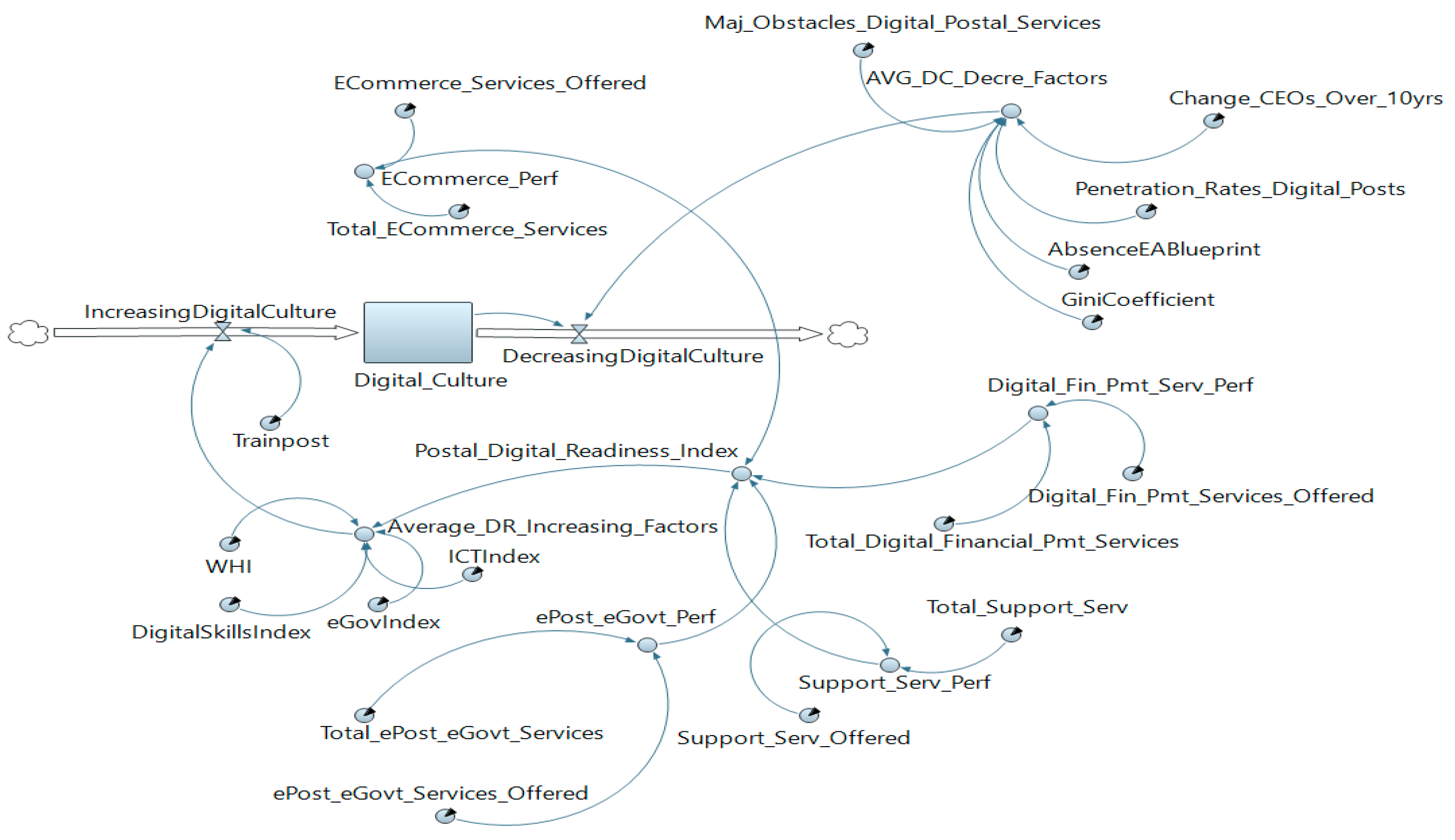

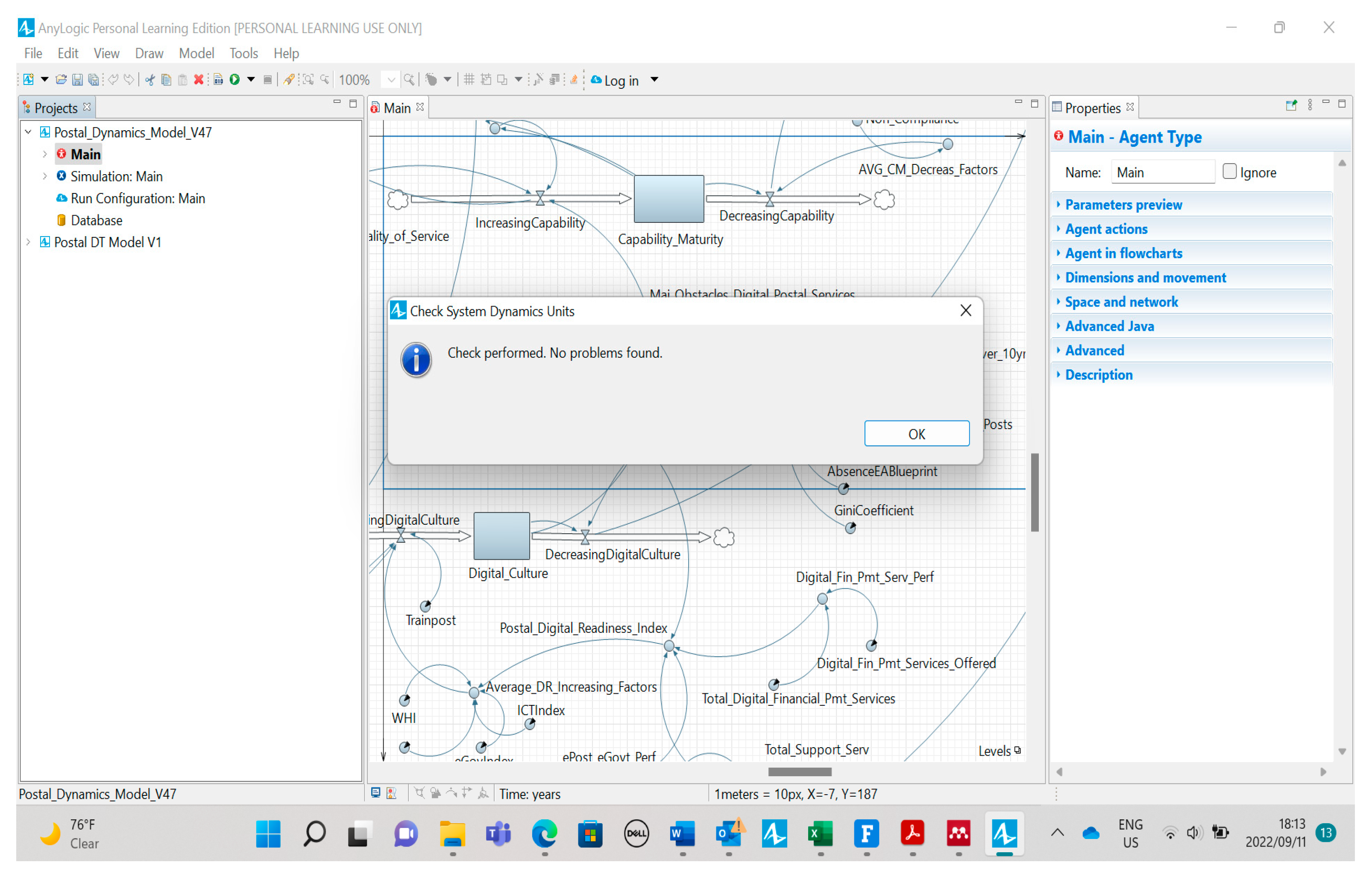
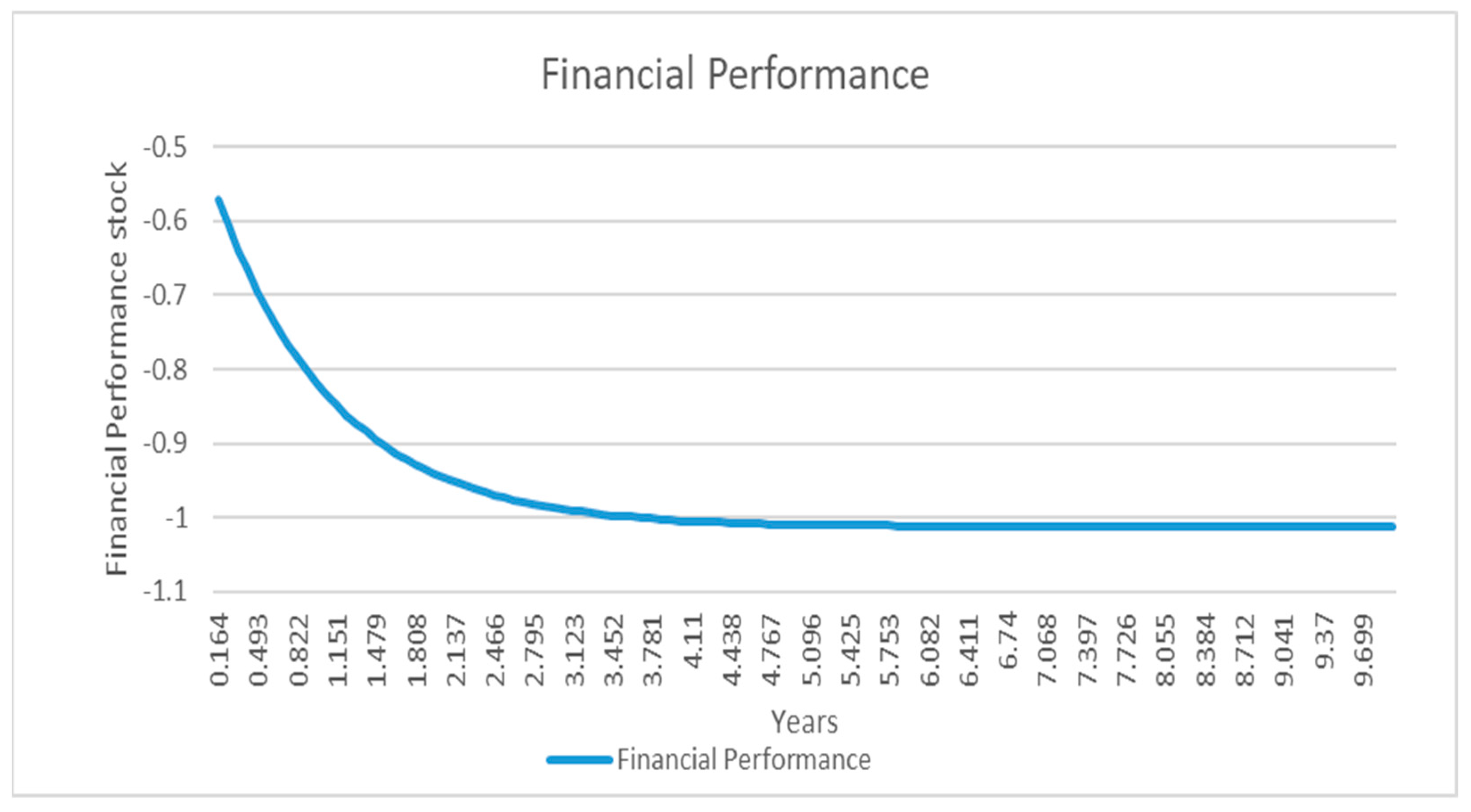
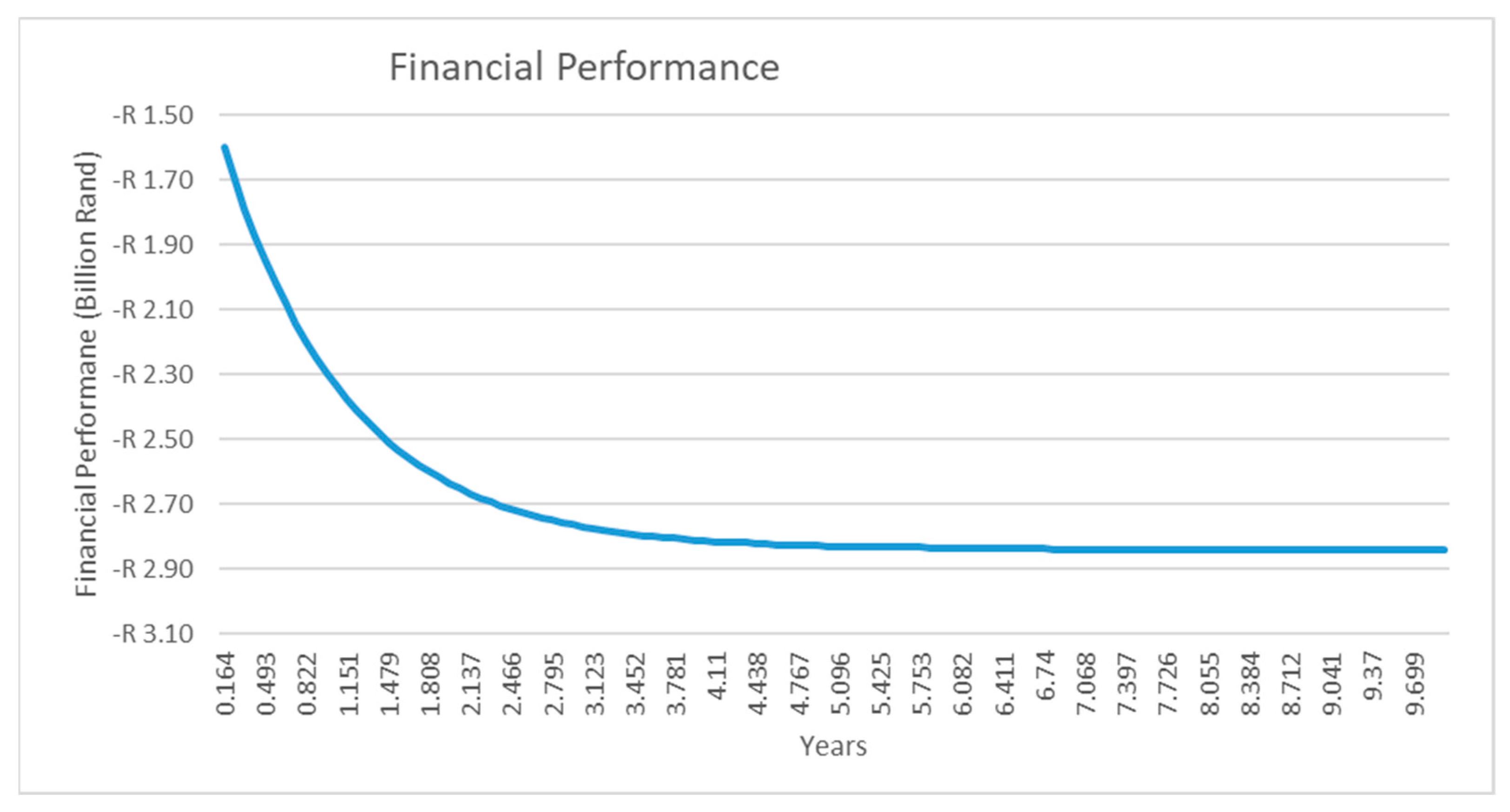


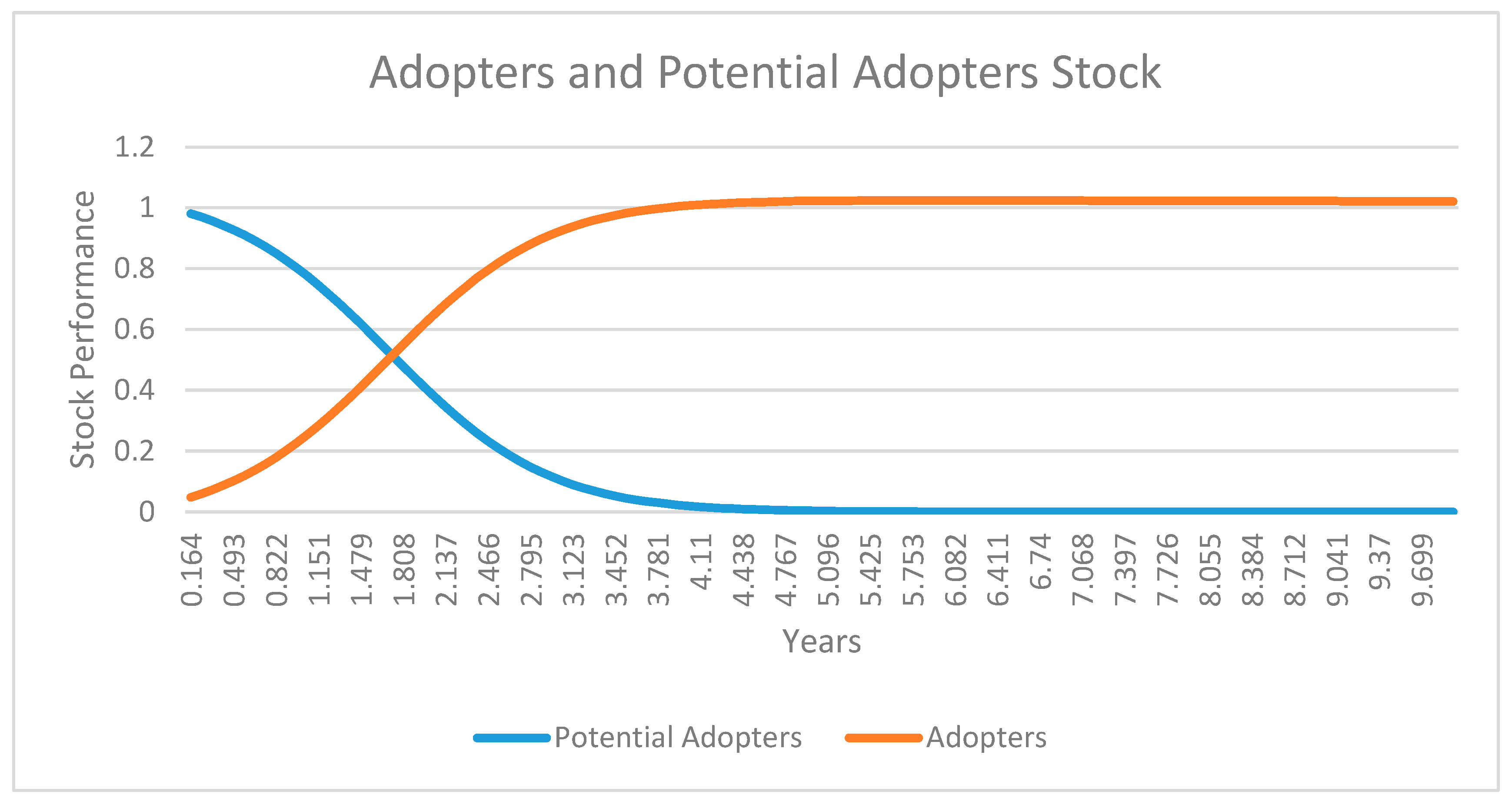
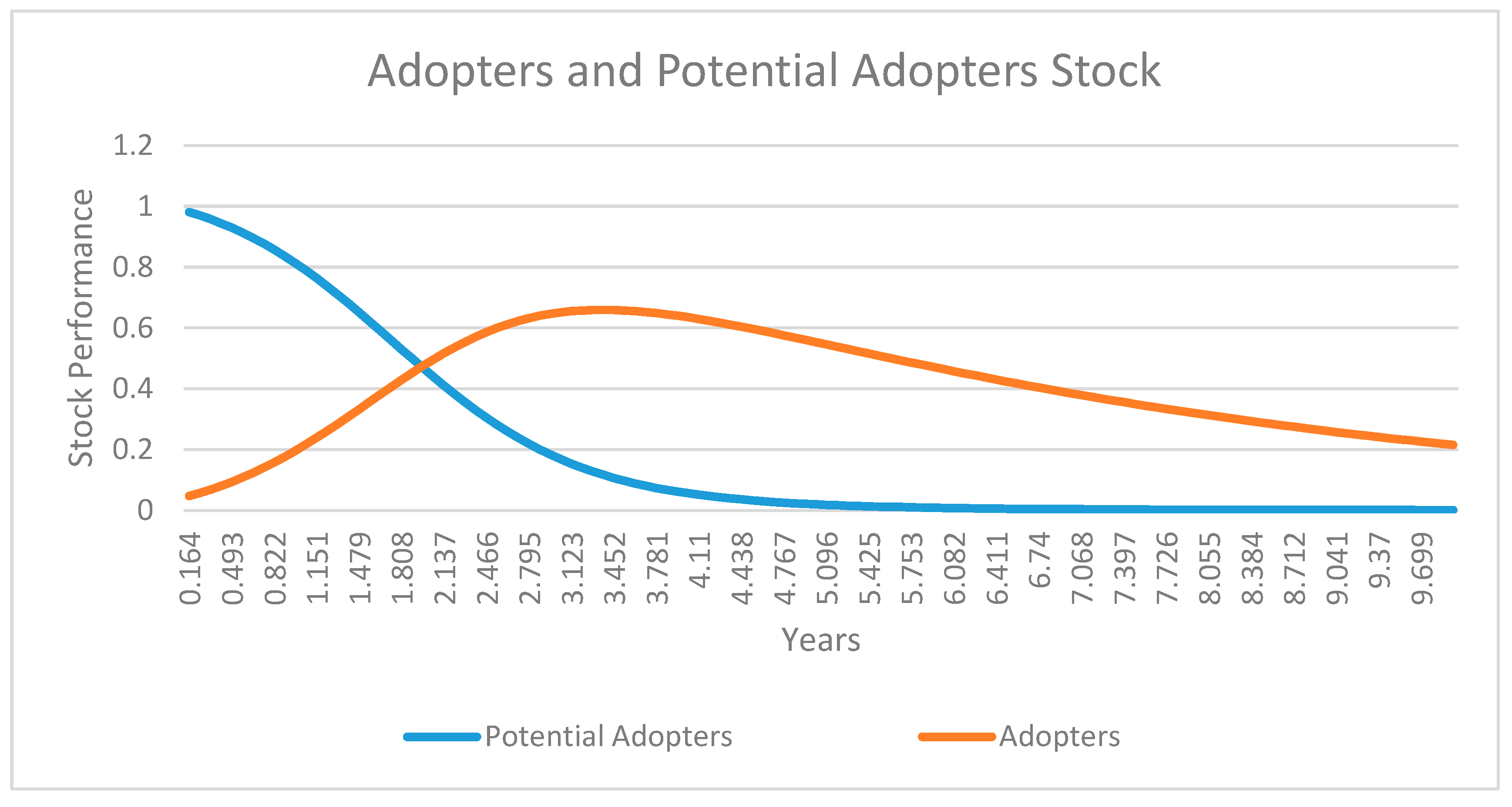
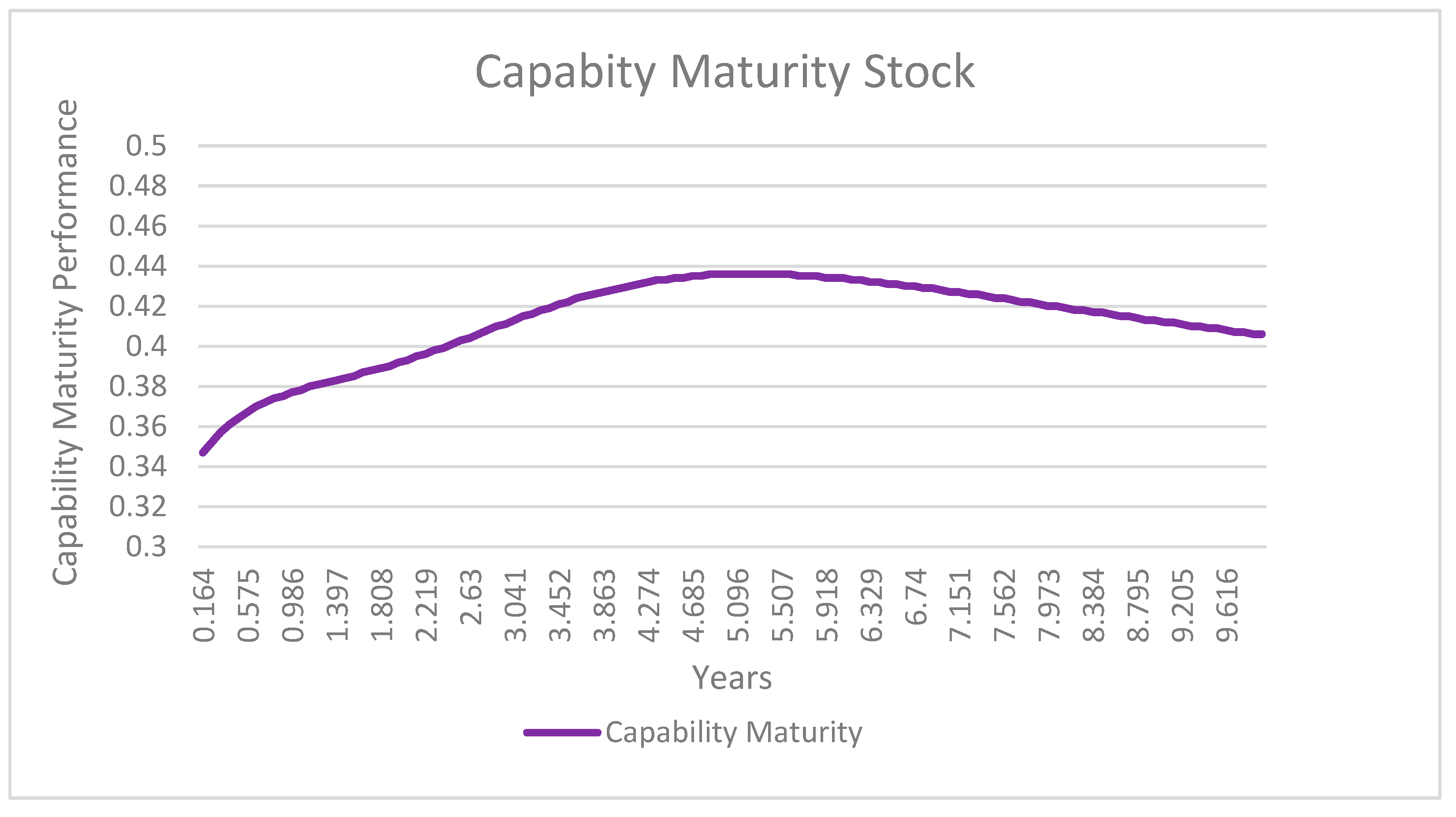

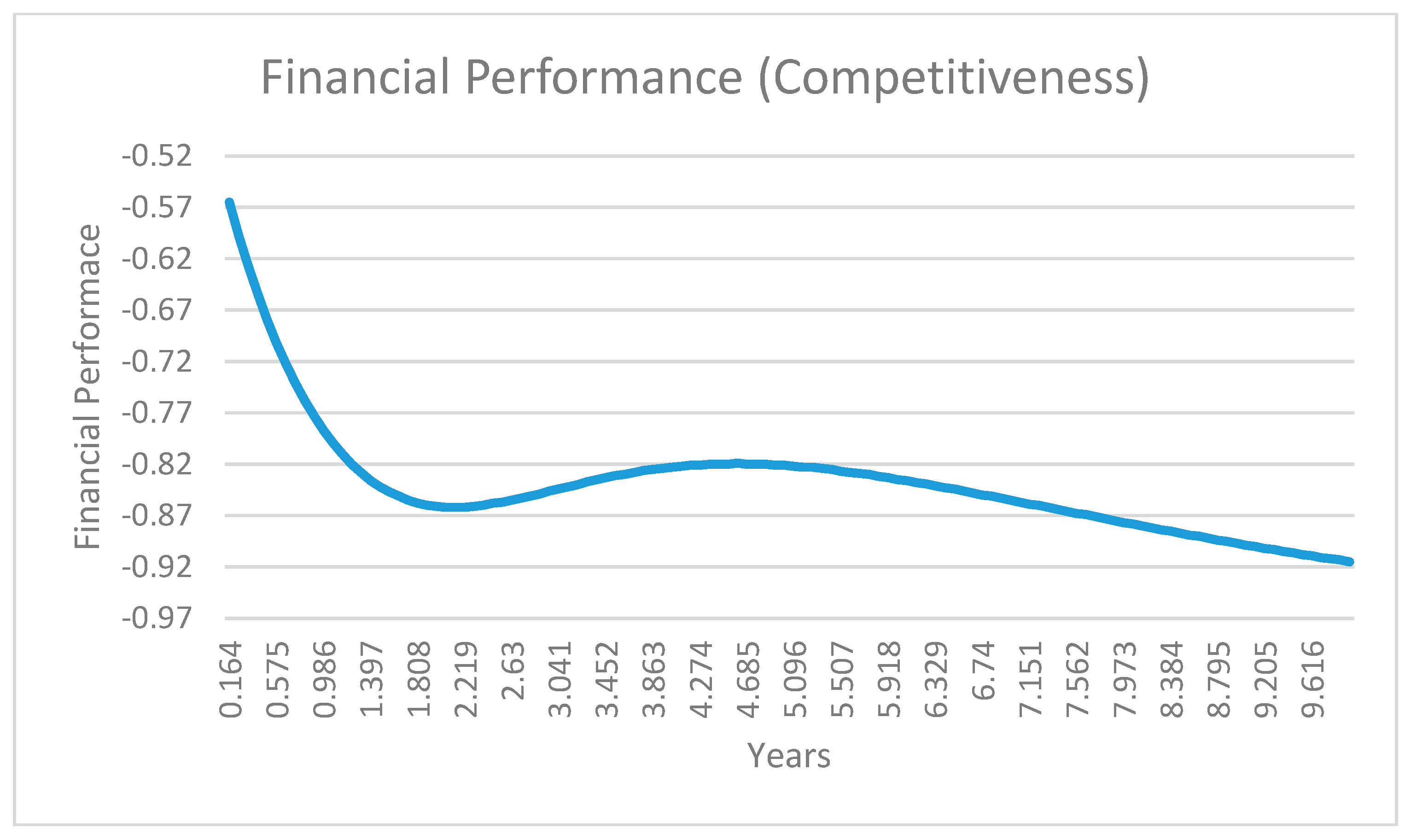
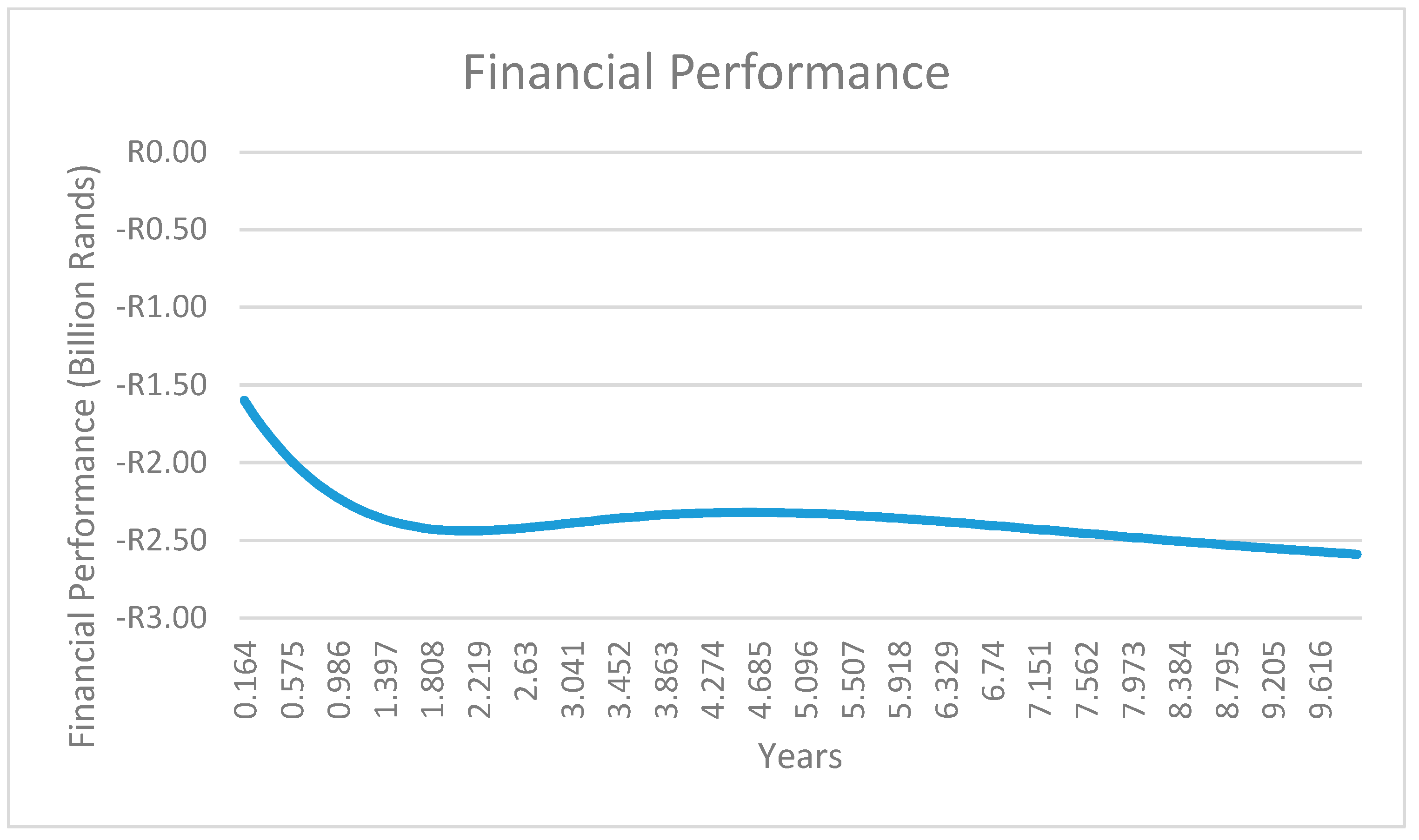
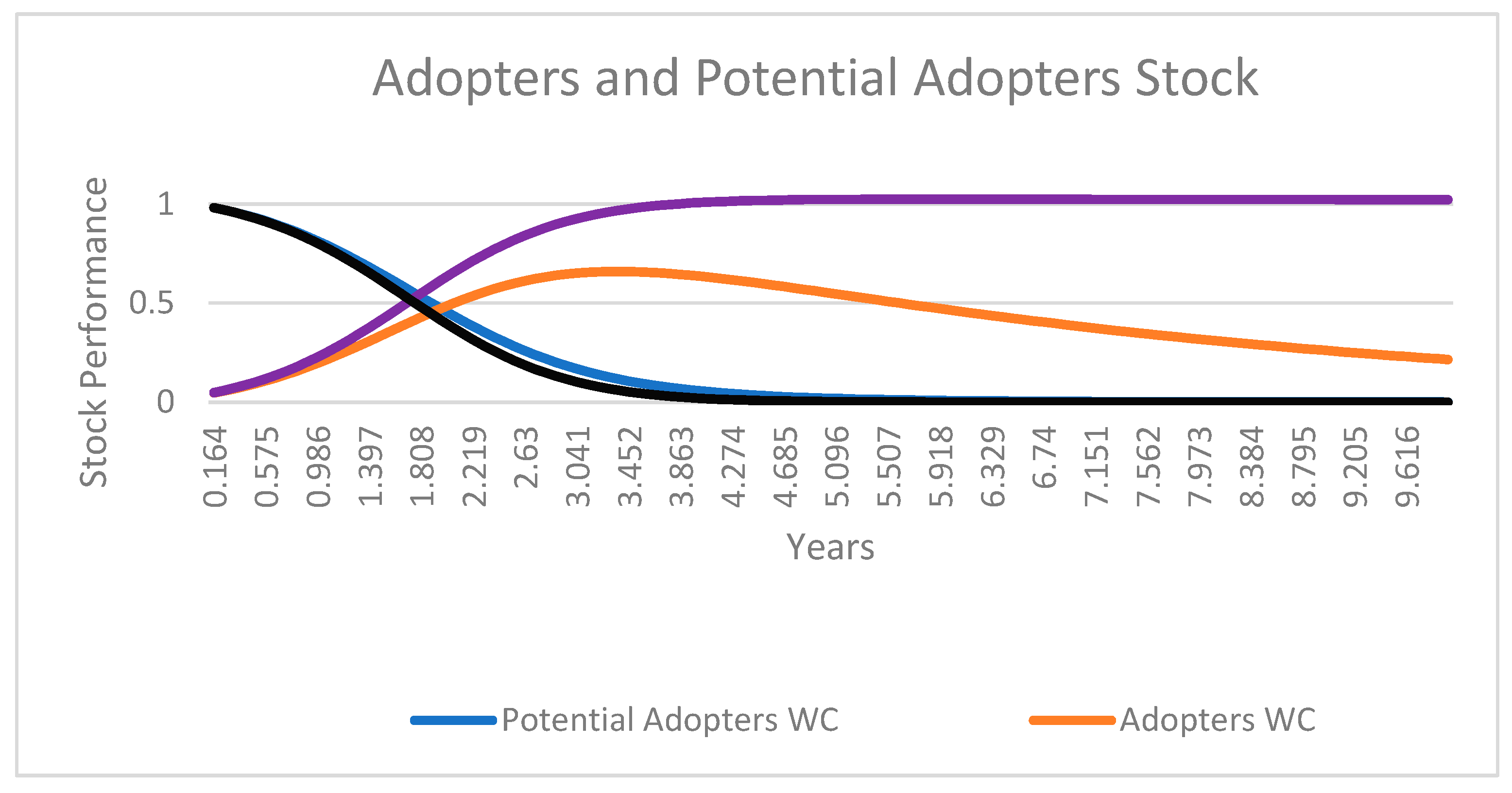
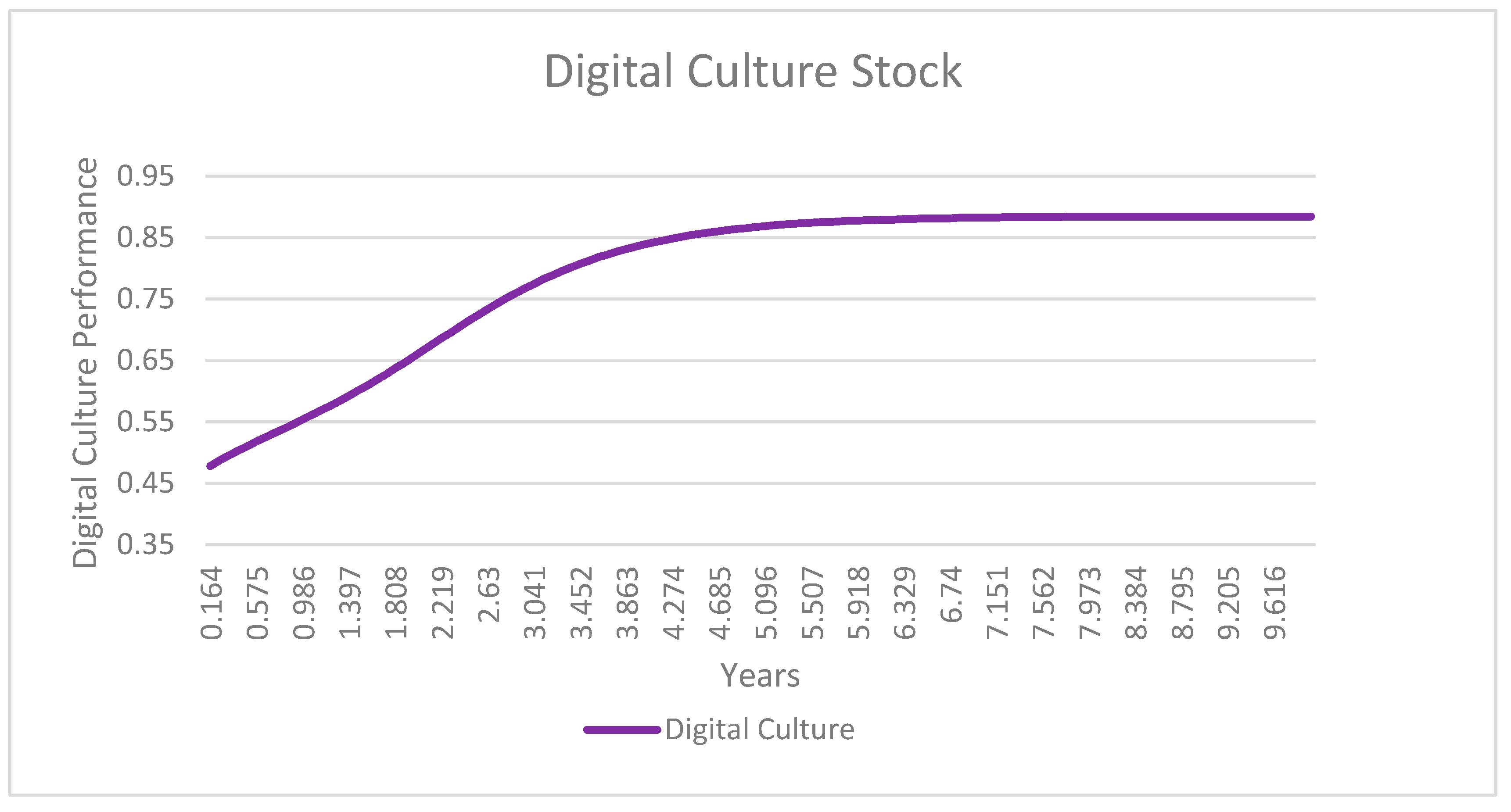

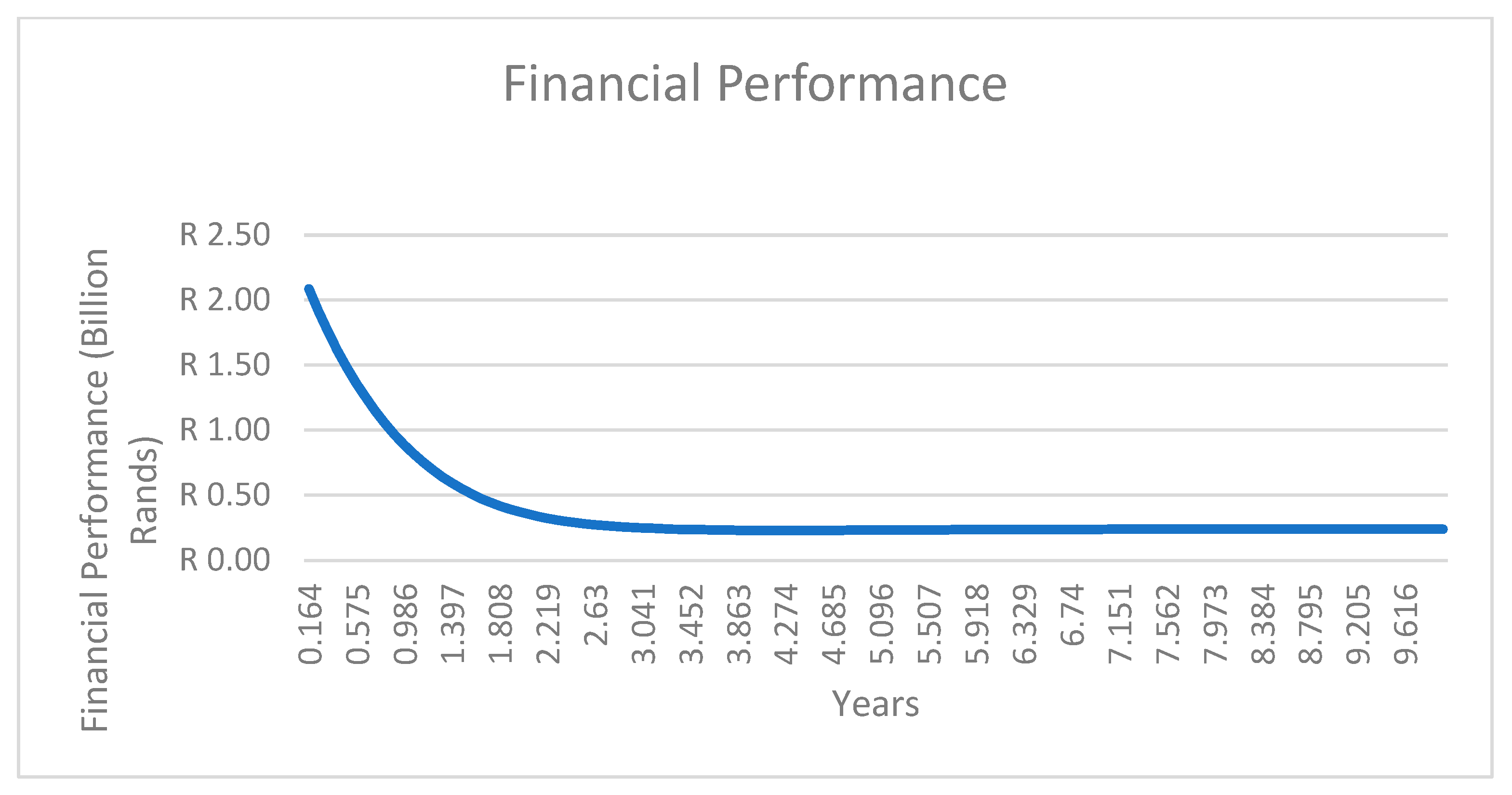

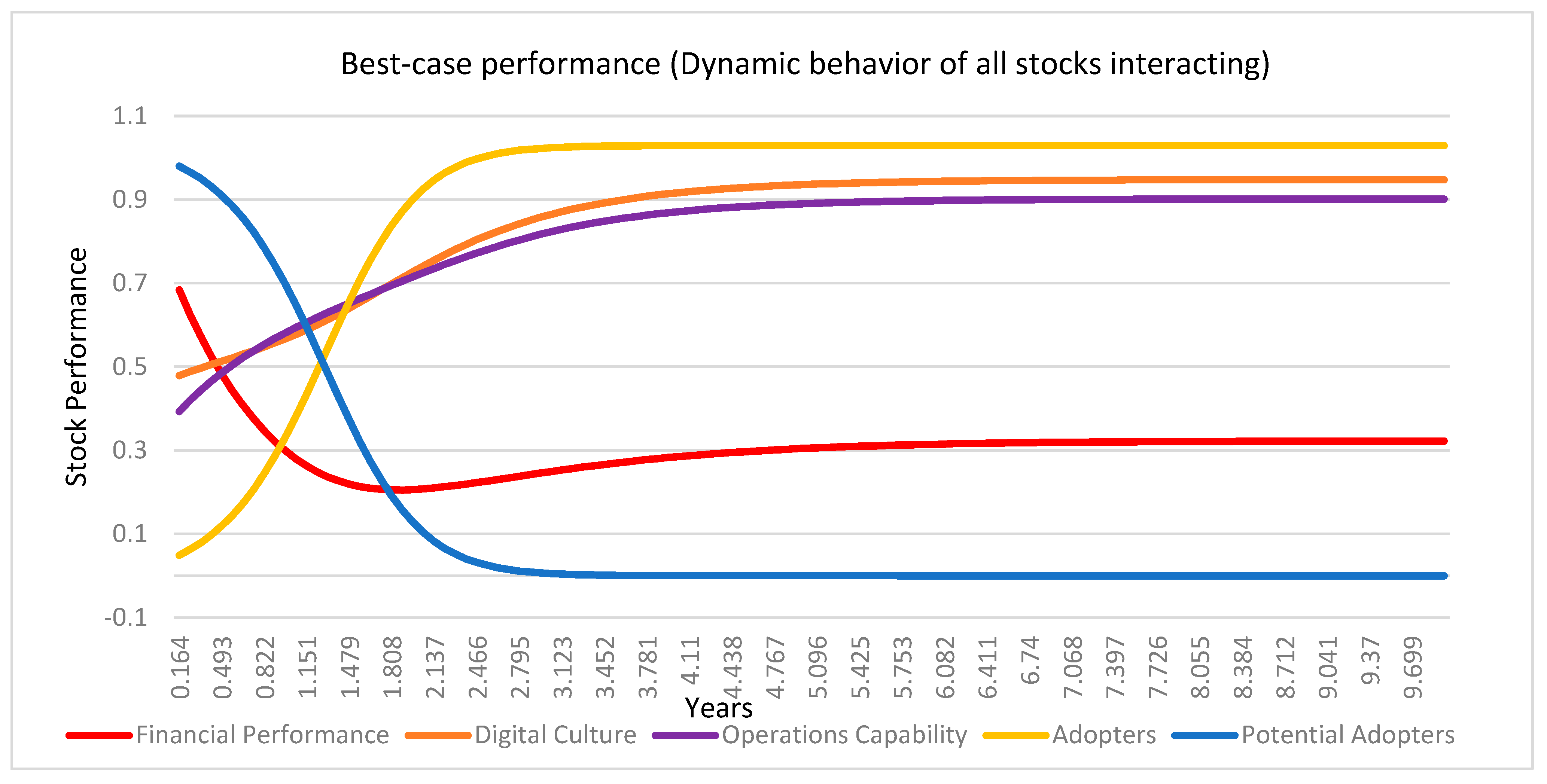
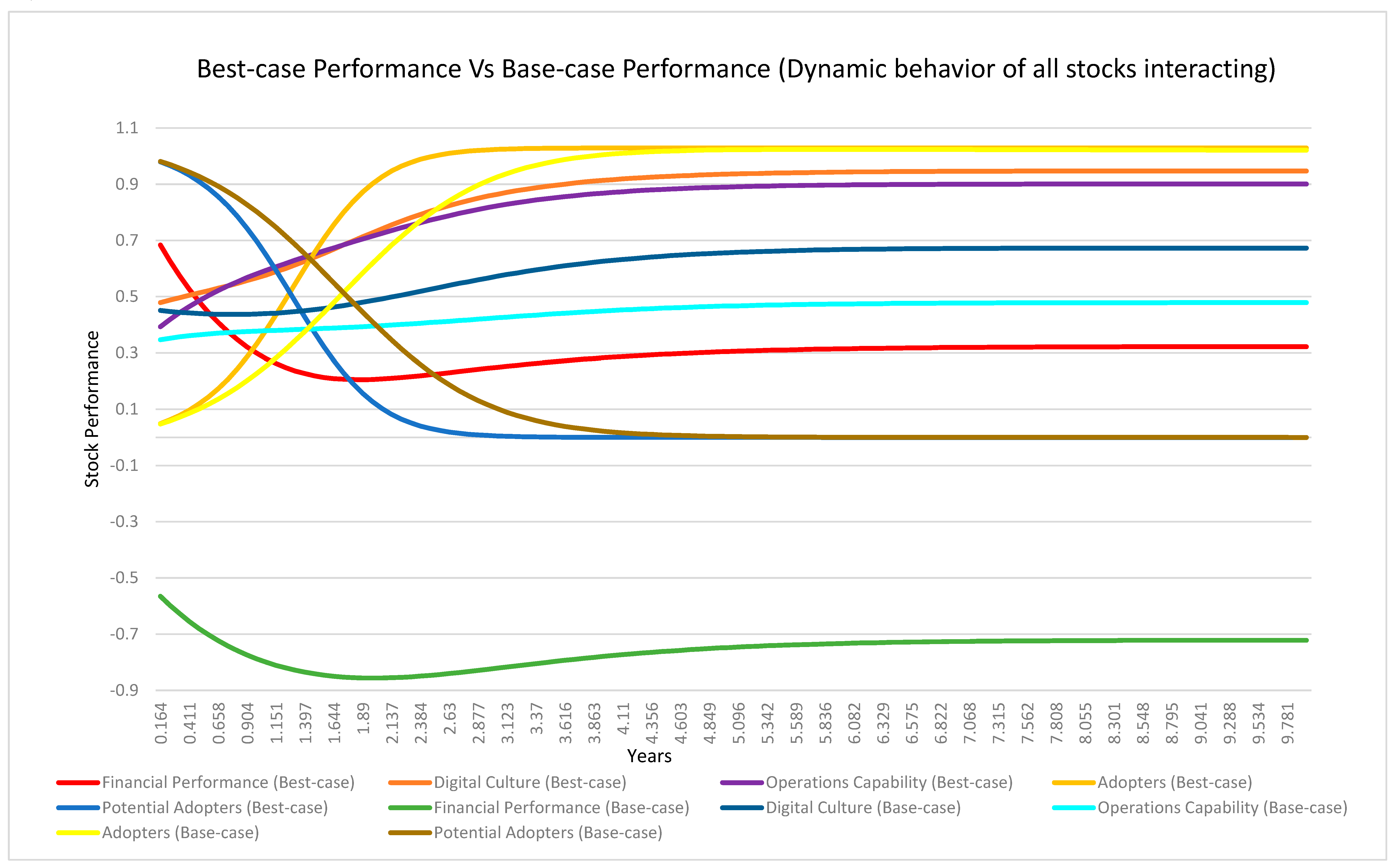
| Geographic Area | Barriers |
|---|---|
| Globally | Resource limitations |
| The shift toward a digital culture | |
| Restrictions on IT capabilities | |
| Deficiency of adequate inner proficiency required to develop e-services | |
| Customs clearance is a significant barrier | |
| Industrialised countries | The time it takes to shift towards a digital culture |
| Overall client adoption of digital postal services is sluggish | |
| Africa | Limited financial resources |
| Poor IT infrastructure | |
| Lack of digital culture | |
| Deficiency of the specialists required to develop e-services | |
| Overall client adoption of digital postal services is sluggish |
Disclaimer/Publisher’s Note: The statements, opinions and data contained in all publications are solely those of the individual author(s) and contributor(s) and not of MDPI and/or the editor(s). MDPI and/or the editor(s) disclaim responsibility for any injury to people or property resulting from any ideas, methods, instructions or products referred to in the content. |
© 2023 by the authors. Licensee MDPI, Basel, Switzerland. This article is an open access article distributed under the terms and conditions of the Creative Commons Attribution (CC BY) license (https://creativecommons.org/licenses/by/4.0/).
Share and Cite
Mokgohloa, K.; Kanakana-Katumba, M.G.; Maladzhi, R.W.; Xaba, S. Postal Digital Transformation Dynamics—A System Dynamics Approach. Systems 2023, 11, 508. https://doi.org/10.3390/systems11100508
Mokgohloa K, Kanakana-Katumba MG, Maladzhi RW, Xaba S. Postal Digital Transformation Dynamics—A System Dynamics Approach. Systems. 2023; 11(10):508. https://doi.org/10.3390/systems11100508
Chicago/Turabian StyleMokgohloa, Kgabo, Mukondeleli Grace Kanakana-Katumba, Rendani Wilson Maladzhi, and Sbusiso Xaba. 2023. "Postal Digital Transformation Dynamics—A System Dynamics Approach" Systems 11, no. 10: 508. https://doi.org/10.3390/systems11100508
APA StyleMokgohloa, K., Kanakana-Katumba, M. G., Maladzhi, R. W., & Xaba, S. (2023). Postal Digital Transformation Dynamics—A System Dynamics Approach. Systems, 11(10), 508. https://doi.org/10.3390/systems11100508






